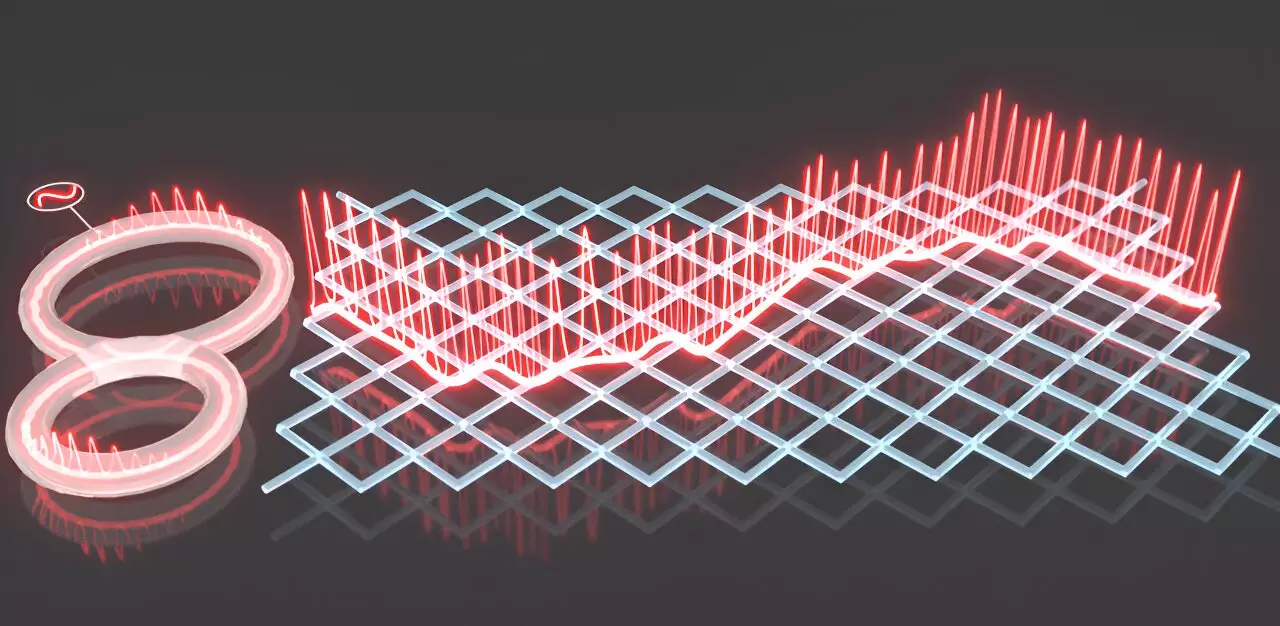In the realm of physics, particularly in the study of waves, achieving coherent control over wave transport and localization captivates researchers across a multitude of disciplines, from solid-state and matter-wave physics to photonics. This quest is fueled not just by curiosity but also by the profound implications these phenomena could have across various applications, including telecommunications, quantum computing, and advanced materials. Among the intricate phenomena that physicists strive to manipulate lies Bloch oscillation (BO)—a periodic oscillatory movement of electrons in solids stimulated by a direct current (DC) electric field.
But while traditional Bloch oscillations have been an object of study for some time, a more nuanced and powerful variation known as Super-Bloch oscillations (SBOs) presents a tantalizing frontier. These phenomena are characterized by expansive oscillatory motions that arise from the simultaneous application of both DC and nearly detuned alternating current (AC) electric fields. SBOs, with their amplified variant of conventional Bloch oscillations, hold the promise of extending our understanding of wave dynamics, yet they often slip under the radar in academic exploration due to the complexities involved in their experimental observation.
The Challenge of Super-Bloch Oscillations
One of the most intriguing aspects of SBOs is their susceptibility to a captivating phenomenon dubbed “collapse.” This occurs when certain AC-driving configurations inhibit coherent oscillation patterns, resulting in an astonishing event where the oscillation amplitude shrinks to zero. For researchers, this situation becomes particularly compelling yet elusive, primarily because the experimental conditions required to achieve SBOs fall within a strong AC driving regime. Up until now, the exploration of SBOs has been largely confined to simple sinusoidal AC-driving cases, leaving a vast swath of potential experimental designs and ramifications uncharted.
Recent research led by a team from the Wuhan National Laboratory for Optoelectronics and Huazhong University of Science and Technology, in collaboration with Italy’s Polytechnic University of Milan, marks a significant breakthrough in this field. Documented in the journal Advanced Photonics, their study introduces a synergistic application of both DC and nearly detuned AC fields within a synthetic temporal lattice, successfully pushing SBOs into this complex regime for the first time.
Breaking New Ground: The Collapse Phenomenon
The team brilliantly navigated the experimental terrain to observe the collapse effect of SBOs, extending their reach into arbitrary wave formats beyond the typical sinusoidal driving conditions. Such investigations reveal essential insights into the flexible control of coherent wave dynamics. By manipulating the synthetic electric fields, they could not only induce oscillation with vanishing amplitudes but also witness a reversal in the direction of oscillation at specific driving amplitudes. These manifestations of SBO collapse signal a new chapter in understanding coherent wave behaviors.
Particularly fascinating is the relationship between the amplitude-to-frequency ratio of the AC-driving field and the collapse phenomenon. When this ratio aligns with the root of the first-order Bessel function, the intriguing inhibition of oscillation occurs, leading to this total collapse with a noticeable flip in the direction of oscillation. Analyzing these dynamics through the Fourier spectrum of oscillation patterns further underscores the rapid changes characterizing SBOs and their collapse.
The Potential for Innovation and Application
The implications of mastering SBOs and their collapse stretch far beyond theoretical pursuits. By generalizing SBOs from simple sinusoidal aquadratures to more arbitrary wave driving situations, researchers can unlock new pathways for wave manipulation. This versatility paves the way for fresh applications in quantum technology and advanced material science, where control over wave properties could lead to groundbreaking innovations.
As science consistently pushes the frontiers of knowledge, the successful exploration of Super-Bloch oscillations exemplifies the continuous interplay between creativity and rigorous experimentation. The findings spotlight an intriguing confluence of theoretical physics with practical innovation, encouraging a future where coherent transport and localization are not mere aspirations but achievable realities, reshaping our understanding of the wave-dominant universe we inhabit.

